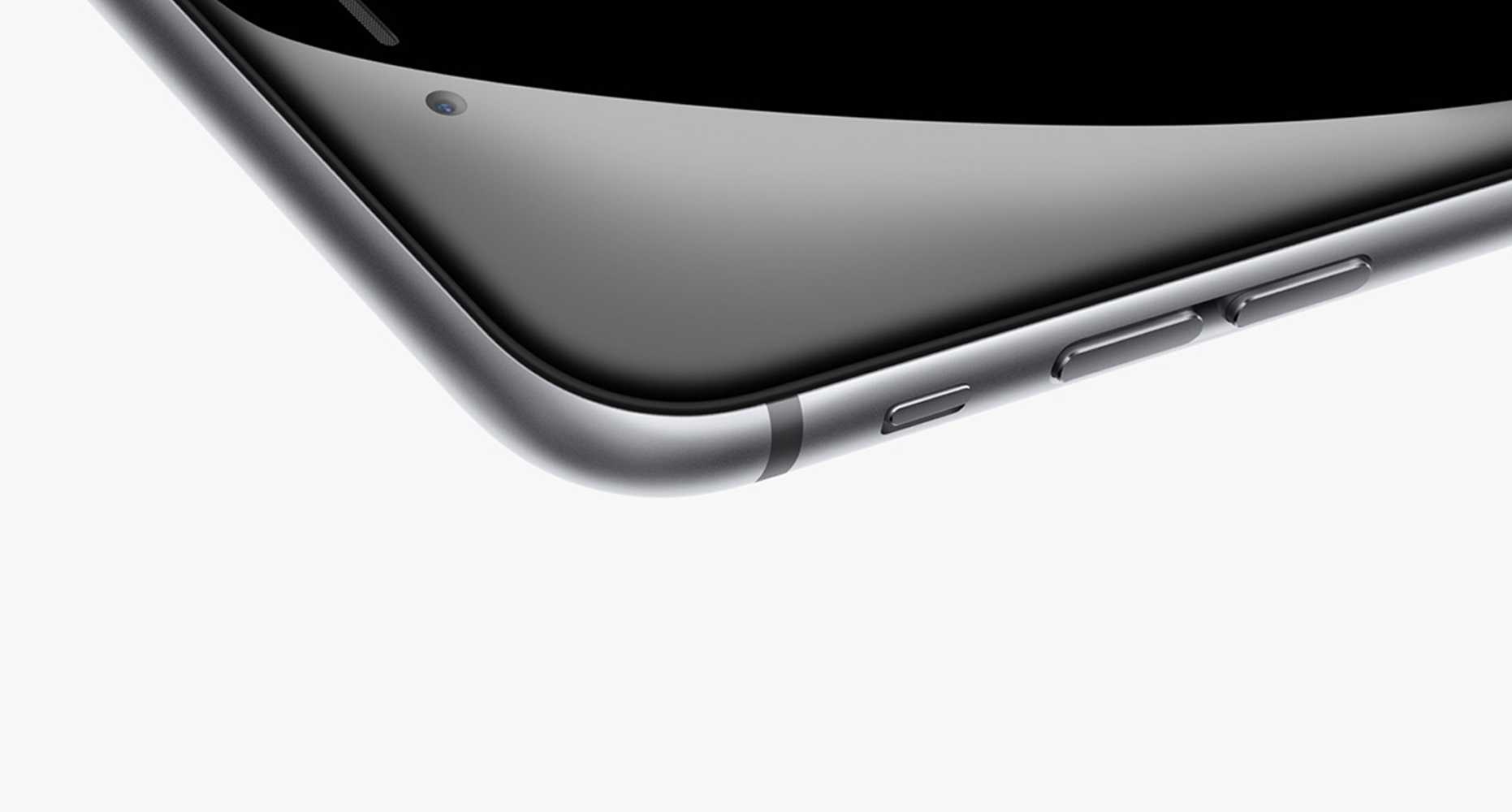
- 2 Min Read / Blog / 3.2.2020

In keeping with tradition, Apple’s special media event held in the company’s hometown of Cupertino generated unprecedented hype—and justifiably so. The company today announced the arrival of two new iPhones—the iPhone 6 and iPhone 6 Plus—in addition to a bevy of other updates including the much-anticipated Apple Watch and a next-generation mobile payments platform. As the keynote began, Apple CEO Tim Cook took to the stage and promised,
“Today, we are launching the biggest advancement in the history of iPhone.”
The iPhone 6, marketed as “bigger than bigger,” pushes the iPhone’s longstanding design to new limits. Sporting a markedly slimmer aluminum enclosure, a tapered glass front forms the contours of a rounded bezel. The new displays use thinner panel elements and Apple claims they’re dustproof, waterproof, and scratch-resistant.
Two variants are available—the base iPhone 6 with a 4.7-inch display and the iPhone 6 Plus with a monster 5.5-inch display. The 6 displays aren’t just larger, but also crisper—Apple’s “Retina HD” displays feature a significantly higher resolution panel at 1920 x 1080. Meanwhile, the iPhone 6 boasts a 1334 x 750 resolution at 326 pixels per inch, meaning both devices offer developers more screen real estate to play with.
Even with bigger dimensions, Apple managed to slim the iPhone even further—the 4.7-inch iPhone 6 measures just 6.9mm thick while the 5.5” iPhone 6 Plus measures 7.1mm, both remarkably slimmer than the iPhone 5s (7.6mm). The new iPhones run on the next-generation A8 system-on-a-chip, which includes a 64-bit processor that’s not only more powerful, but also more energy-efficient. Alongside the A8 is the iPhone’s M8 motion co-processor, which aggregates motion data to distinguish between running and cycling, compute elevation changes, and measure elevation from variations in air pressure.
iPhone photographers will appreciate the advancements made on the iPhone 6’s “iSight” rear shooter. Since the iPhone 4s, Apple has maintained the same 8-megapixel resolution, but has continually enhanced the camera’s sensor to allow for higher image quality, depth of field, and color fidelity. This year’s model makes the iPhone’s iSight camera the best yet, adding improved face detection, exposure control, optical image stabilization, and panoramic capabilities.
In addition to its versatile f/2.2 aperture, the iSight sensor can automatically detect focal points within a composition and adjust exposure and depth accordingly. In terms of video, users can take 1080p HD videos at either 30 or 60 frames per second, can capture slow-motion video at both 90 and an incredible 120 fps. Today’s demonstration highlighted a slow-motion clip of two jump ropers that flexed the iPhone’s video playback capabilities.
The iPhone 6 also does well to take advantage of new antenna technologies. Both iPhones come with 802.11ac Wi-Fi networking for faster home and office speeds, and an improved LTE antenna allows for download speeds up to 150 mbps. The biggest announcement yet came in the form of Apple’s new mobile payment system, Apple Pay. Using the iPhone 6’s new NFC chip, users can pay for products directly with their device, as the new embedded near-range chip integrates with credit cards stored in Passbook.
A range of customizable options are available for the new iPhones. Colors come in gold, silver, and space gray, with a familiar range of of storage options. The 4.7” iPhone 6 comes in 16GB, 64GB, and 128GB, costing $199, $299 and $399 respectively on a two-year contract. The iPhone 6 Plus costs $299 for 16GB, $399 for 64GB, and $499 for 128GB on a two-year contract. The decrease in storage costs complement Apple’s new iCloud Drive offerings, meaning users can get unprecedented amounts of combined cloud and local storage for cheaper than ever before.
The new devices bring Apple’s iOS ecosystem into the market for larger phones, and the company wasn’t contented with simple making a 5.5-inch device to keep up with the Android Joneses. Various software additions and improvements take advantage of the extra screen real estate, including new dual-column interfaces for apps like Messages and Mail, and even a landscape-orientation home screen. These entries modernize Apple’s offerings and accommodate a growing market of “phablet” fans without detracting from the company’s reputation for high-quality industrial design and consideration for user interfaces.
iPhone 6 will doubtless be a blockbuster new product, and fans have already begun lining up outside their local Apple retail locations. Just as the Mac served as Apple’s digital hub in the last decade, the company’s modern ecosystem of interconnected smart devices keeps the iPhone family as the centerpiece and connectivity hub. With the iPhone 6, Apple has proved that they can meet the needs of millions of adoring fans without compromising on their ideals.